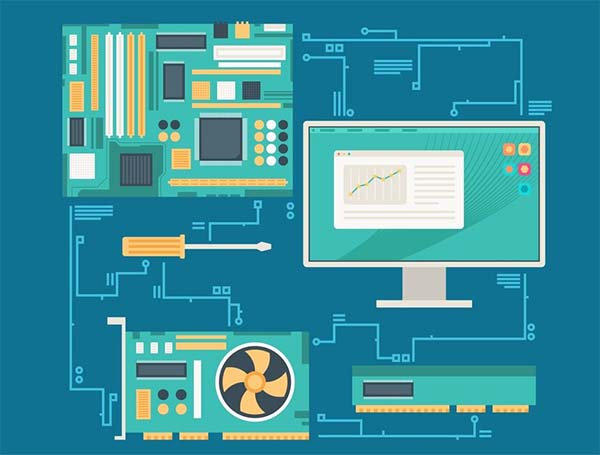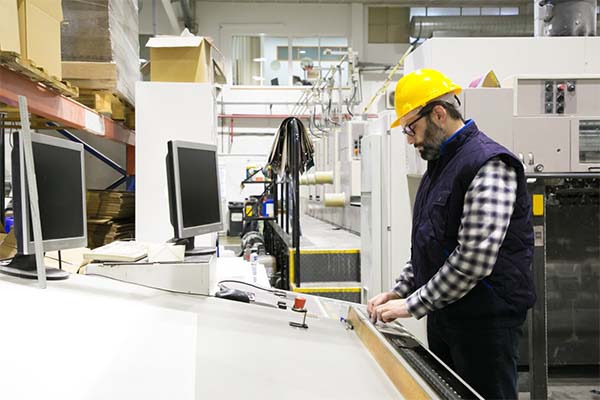In the realm of industrial automation, two key technologies play pivotal roles: Programmable Logic Controllers (PLCs) and industrial-grade computers. These systems serve as the backbone of modern manufacturing and production processes, enabling seamless operations, enhanced efficiency, and improved safety. While both PLCs and industrial-grade computers share similar objectives, they differ significantly in terms of design, functionality, and application. Understanding these differences is crucial for businesses seeking to optimize their processes and make informed decisions about their automation infrastructure.
PLCs (Programmable Logic Controllers)
Definition and Primary Function
PLCs, or Programmable Logic Controllers, are specialized digital computers designed to control machinery and automate processes in industrial settings. They are programmed to perform specific tasks based on input from sensors and other devices, making them ideal for applications that require precise control and real-time responsiveness.

Common Applications in Industrial Automation
PLCs are widely used in a variety of industrial applications, including manufacturing, automotive, and energy industries. They are commonly used to control and monitor processes such as assembly lines, conveyor systems, and robotic arms. PLCs can also be used to control heating, ventilation, and air conditioning (HVAC) systems, as well as lighting and security systems.
Advantages and Disadvantages
Advantages:
- Reliability: PLCs are designed to operate in harsh industrial environments and can withstand temperature fluctuations, dust, and vibration.
- Flexibility: PLCs can be easily reprogrammed to accommodate changes in production requirements or process parameters.
- Real-Time Control: PLCs offer real-time control and monitoring capabilities, allowing for quick response to changes in the process.
Disadvantages:
- Limited Processing Power: PLCs are not as powerful as general-purpose computers and may not be suitable for complex data processing tasks.
- Programming Complexity: PLC programming requires specialized knowledge and can be complex, especially for large and complex systems.
- Cost: PLCs can be expensive, especially for large-scale applications that require multiple units.
Industrial-Grade Computers
Definition and Primary Function
Industrial-grade computers are specialized computing devices designed to operate in harsh industrial environments. They are built to withstand extreme conditions, including temperature fluctuations, dust, and vibration. Computer industrial grade are equipped with powerful processors, ample memory, and a variety of input/output options, making them suitable for complex applications such as data acquisition, analysis, and visualization.

Common Applications in Industrial Settings
Industrial-grade computers are commonly used in industries that require high-performance computing, such as aerospace, defense, and research. They are used for a variety of applications, including process control, data logging, and monitoring. computer industrial grade can also be used for machine vision, robotics, and automation.
Advantages and Disadvantages
Advantages:
- Durability: Industrial-grade computers are built to withstand harsh industrial environments and can operate reliably in extreme conditions.
- Performance: Industrial-grade computers offer high-performance computing capabilities, making them suitable for complex data processing tasks.
- Customization: Industrial-grade computers can be customized to meet specific application requirements, including input/output options and expansion capabilities.
Disadvantages:
- Cost: Industrial-grade computers can be expensive, especially for high-performance models with advanced features.
- Complexity: Industrial-grade computers may require specialized knowledge to configure and maintain, especially for complex applications.
- Size and Weight: Industrial-grade computers are typically larger and heavier than consumer-grade computers, making them less portable.
Comparison Between PLCs and Industrial-Grade Computers
Hardware and Software Differences
PLCs are specialized digital computers designed for control and automation tasks. They typically have a rugged design and are optimized for real-time control and monitoring. PLCs use specialized programming languages such as ladder logic or function block diagrams.
Industrial-grade computers, on the other hand, offer a broader range of capabilities. They are equipped with powerful processors, ample memory, and a variety of input/output options. computer industrial grade can run a variety of operating systems and programming languages, including Windows, Linux, and C/C++.
Performance and Processing Capabilities
PLCs are optimized for real-time control and monitoring and are designed to handle specific tasks efficiently. They may not be as powerful as industrial-grade computers but are well-suited for applications that require precise control and real-time responsiveness.
Industrial-grade computers offer high-performance computing capabilities and can handle complex data processing tasks. They are suitable for applications that require data acquisition, analysis, and visualization.
Customization and Scalability
PLCs are typically designed for specific applications and may not be easily customizable. However, they can be easily reprogrammed to accommodate changes in production requirements or process parameters.
Industrial-grade computers offer greater flexibility and can be customized to meet specific application requirements. They can also be easily scaled to accommodate changes in processing requirements.
Reliability and Durability
PLCs are designed to operate in harsh industrial environments and can withstand temperature fluctuations, dust, and vibration. They are well-suited for applications that require reliability and durability.
Industrial-grade computers are also designed to withstand harsh industrial environments and can operate reliably in extreme conditions. They are suitable for applications that require high-performance computing and durability.
Cost Considerations
PLCs are generally more cost-effective for simple control tasks. However, they may not be suitable for complex applications that require high-performance computing.
Industrial-grade computers are more expensive but offer greater flexibility and performance. They are suitable for applications that require high-performance computing and customization.
In summary, both PLCs and industrial-grade computers have their own strengths and weaknesses. Businesses should carefully consider their specific needs and requirements before deciding which technology to implement in their automation infrastructure.
Conclusion
In conclusion, PLCs and industrial-grade computers are both vital in industrial automation, but they serve different purposes. PLCs are specialized for control and automation tasks, while Industrial Box PC offer versatility and high-performance computing. The choice between them depends on specific needs, such as real-time control versus complex data processing. Future trends in automation will focus on improving efficiency and flexibility, with advancements in AI, machine learning, and IoT. Businesses must select the right technology to stay competitive and meet evolving industry demands.